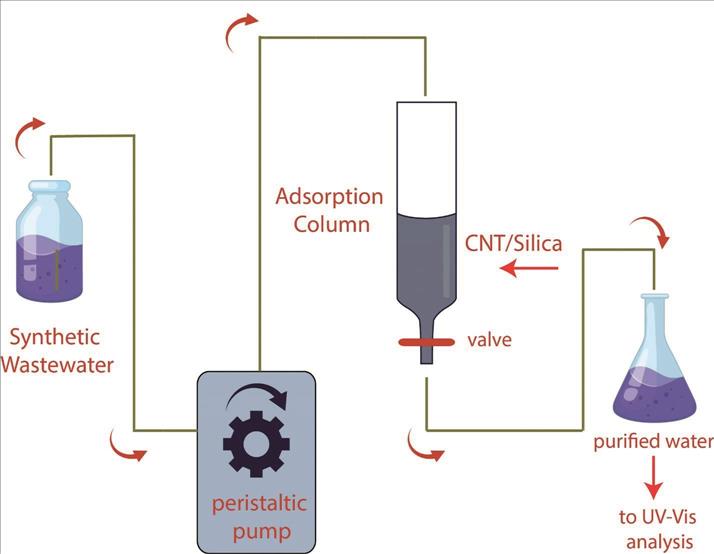(MENAFN- The Peninsula)
Doha: An international team, led by Qatar University (QU) researchers, has recently published a research article in Environmental Science and Pollution Research, a reputable journal published by Springer Nature.
The work presented a rapid and efficient removal of the antidiabetic drug glimepiride by multi-walled carbon nanotubes (MWCNT). The research was motivated by the rising global water pollution concerns caused by Pharmaceutical and personal care products (PPCP). Such pollutants have been detected in surface water across the globe, particularly in heavily populated areas.
This research aims to develop a new method for removing residues of Gilmeride, a common drug to treat type II diabetes, using carbon nanotubes in a continuous adsorption process. This research came as a collaboration between Dr. Ismail Badran, Assistant Professor, Department of Chemistry and Earth Sciences at the College of Arts and Sciences at Qatar University, Dr. Murad Abu Al Hassan, an associate professor in Pharmacy, An-Najah National University in Palestine, and Obada Qut, a graduate student in the Department of Chemistry at An-Najah University. The research was also done in collaboration with Dr. Abdullah Manasra, Department of Chemical Engineering at the University of Calgary, Canada.
This research serves Qatar University's objectives within its continuous vision to focus on scientific research and its quality and to develop human and technical skills in Qatar. Qatar University is an active and pivotal research body for Qatar's development, which conducts high-level research to serve its partners in the community.

The university's role as an engine for research and innovation in Qatar focused on a record of research achievements. The research was supported by the College of Arts and Sciences at Qatar University, the Central Laboratory Unit (CLU) at Qatar University, and An-Najah National University in Palestine.
The study utilised MWCNT to remove the antidogmatic drag, glimepiride, from aqueous media. The study revealed that the drug could be removed with almost 100% efficiency. For potential industrial implementation, the study was done under continuous-flow mode rather than the conventional batch method.
The researchers point out that water pollution by emerging pollutants such as pharmaceutical and personal care products is one of today's biggest challenges. The presence of these emerging contaminants in water has raised increasing concern due to their frequent appearance and persistence in the aquatic ecosystem and threat to health and safety.
The research explained that the antidiabetic drug glimepiride, GPD, is among these compounds and can cause adverse effects on human health if not carefully administered. Several conventional processes were proposed for the elimination of these persistent contaminants, and adsorption is among them. Therefore, in this study, the adsorptive removal of GPD from water using MWCNT supported on silica was explored on a fixed-bed column. The effects of bed-height, solution pH, and flow rate on the adsorptive removal of GPD were investigated.
The obtained adsorption parameters using Sips, Langmuir, and Freundlich models were used to investigate the continuous adsorption. The results showed that the drug removal improved with the increasing bed height; however, it decreased with the flow rate.
The effect of pH indicated that the adsorption is significantly affected and increased in acidic medium. The convection-dispersion model coupled with Freundlich isotherm was developed and used to describe the adsorption breakthrough curves. The maximum adsorption capacity (qm) was 275.3 mg/g, and the axial dispersion coefficients were ranged between 3.5 and 9.0 × 105 m2/s. The spent adsorbent was successfully regenerated at high pH by flushing with NaOH.
MENAFN15022021000063011010ID1101601992
Legal Disclaimer:
MENAFN provides the information “as is” without warranty of any kind. We do not accept any responsibility or liability for the accuracy, content, images, videos, licenses, completeness, legality, or reliability of the information contained in this article. If you have any complaints or copyright issues related to this article, kindly contact the provider above.